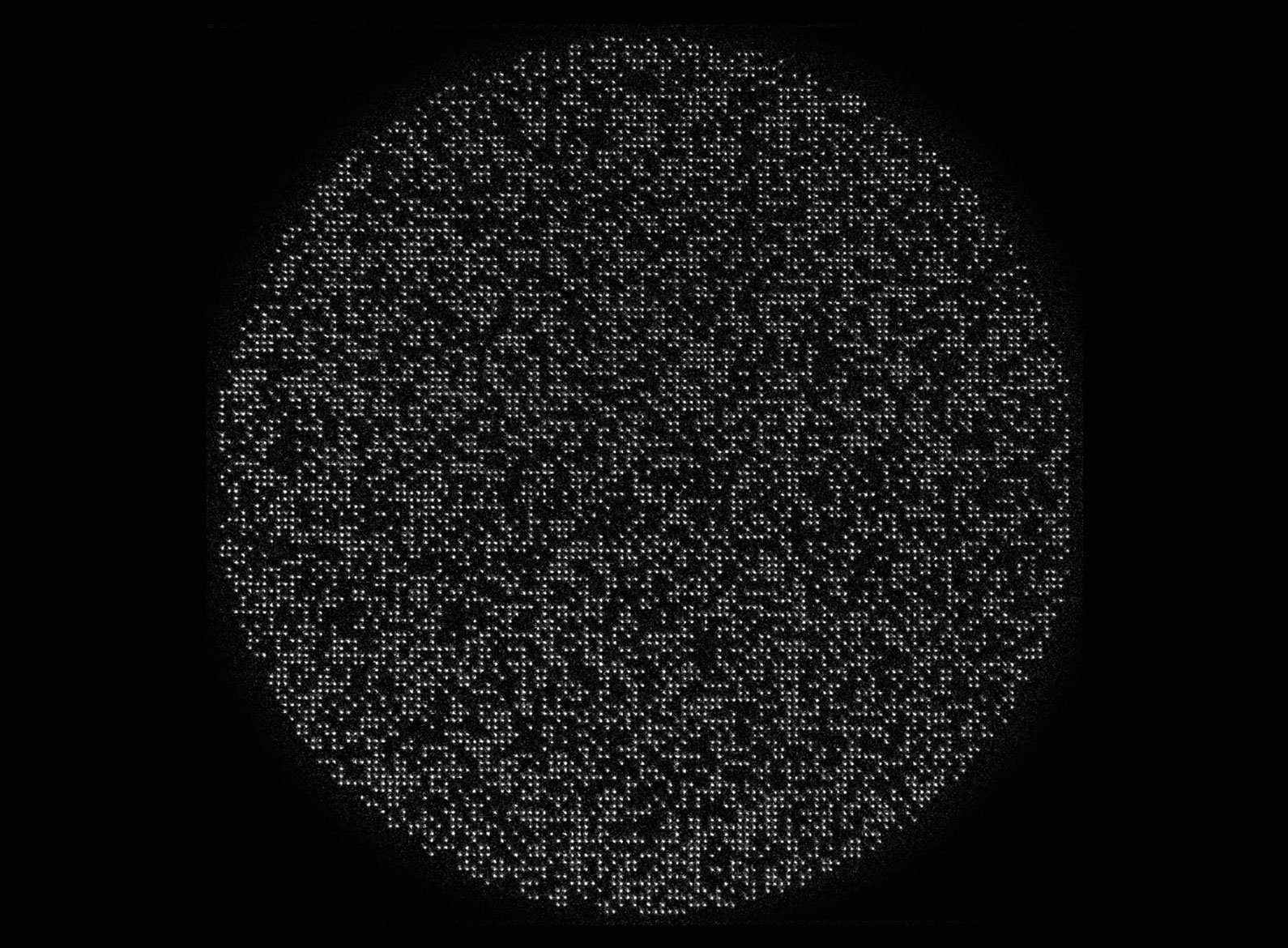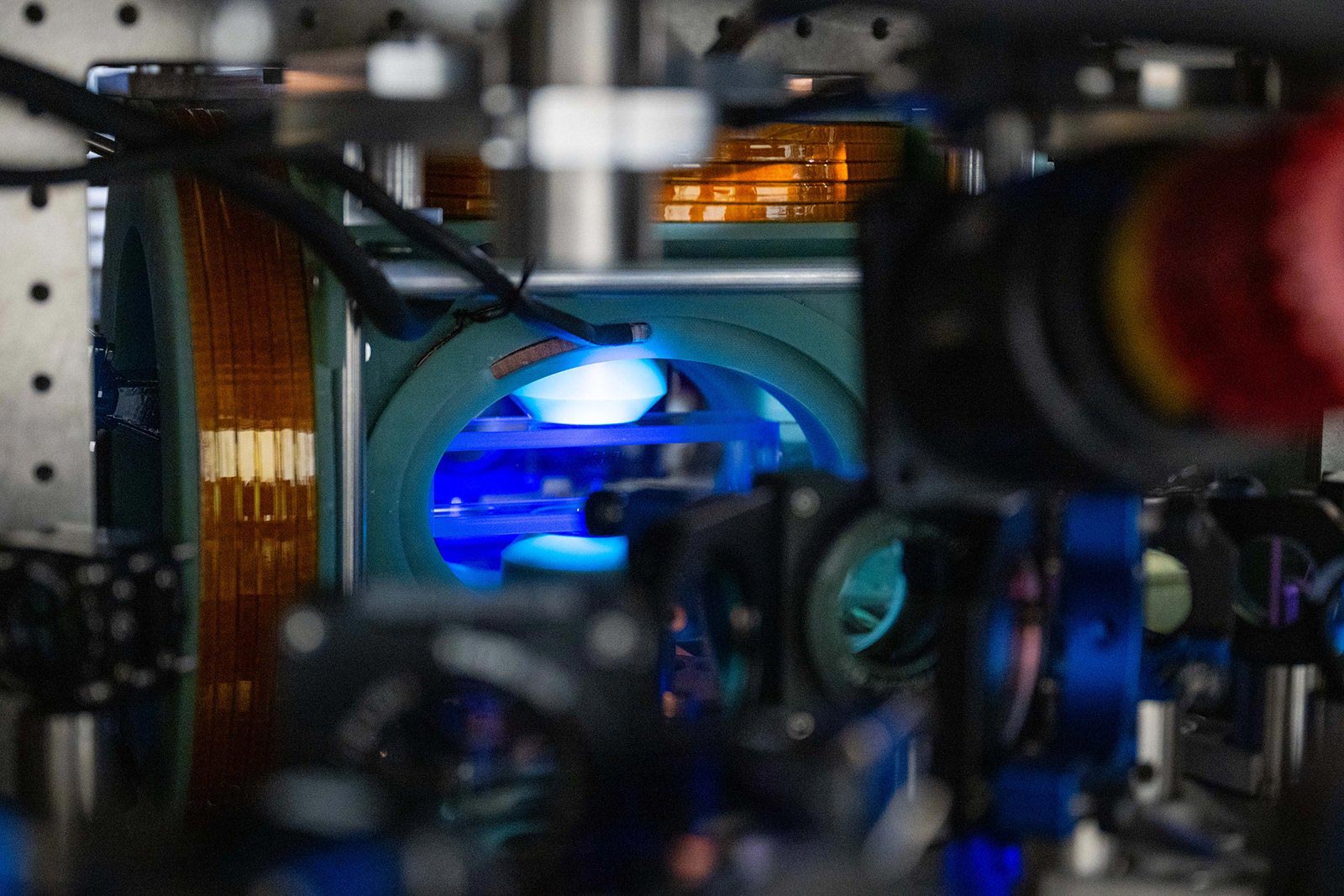Follow us on Google News (click on ☆)
Physicists at the California Institute of Technology (Caltech) have made a significant breakthrough by creating the largest qubit network ever built, composed of 6,100 neutral atoms, each acting as a qubit. This achievement far surpasses previous systems that were limited to a few hundred qubits. The team used optical tweezers, ultra-precise laser beams, to individually trap cesium atoms in a vacuum chamber. This method allows for manipulating each qubit with remarkable precision while maintaining their quantum properties.

Image showing 6,100 cesium atoms trapped by focused laser beams called optical tweezers. The diameter of the circle is about one millimeter.
Credit: Caltech/Endres Lab
The quality of the qubits proved exceptional despite their impressive number. The researchers maintained these atoms in a quantum superposition state for about 13 seconds, a duration nearly ten times longer than previous performances. This superposition allows qubits to exist simultaneously in multiple states, an essential property for quantum calculations. Individual manipulation of the qubits reached a precision rate of 99.98%, demonstrating that it's possible to combine quantity and quality in these systems.
The team also proved they could move the atoms over hundreds of micrometers while preserving their quantum coherence. This ability to transport qubits without disturbing their state is crucial for future applications. It notably allows for dynamically reorganizing the network to optimize operations and facilitate error correction, a functionality that distinguishes this approach from other quantum platforms.

Chamber containing the 6,100 laser-trapped atoms in an ultra-high vacuum.
Credit: Caltech/Lance Hayashida
The next steps aim to establish quantum entanglement links between the qubits, a phenomenon where particles become correlated and behave as a single system. This entanglement is essential for performing complete quantum calculations and fully exploiting the power of these machines. It paves the way for simulating natural phenomena currently beyond reach and could revolutionize our understanding of the Universe at the quantum scale.
Quantum superposition
Quantum superposition is a fundamental principle of quantum mechanics that allows a particle to exist in multiple states simultaneously. Unlike classical bits that can only be 0 or 1, a qubit in superposition represents a combination of these two states. This property is often illustrated by the famous Schrödinger's cat, both alive and dead until observed.
The duration of superposition, called coherence time, is a critical parameter for quantum computers. The longer it is, the more complex calculations can be performed before the qubits lose their quantum properties. The 13 seconds achieved in this experiment represent a significant improvement over previous systems.
This superposition allows quantum computers to simultaneously explore many solutions to a problem, which significantly accelerates certain types of calculations. It is essential for applications like factoring large numbers or simulating molecules in quantum chemistry.
Mastering superposition also opens perspectives for studying the foundations of quantum physics itself, allowing researchers to test theories about the boundary between quantum and classical worlds.